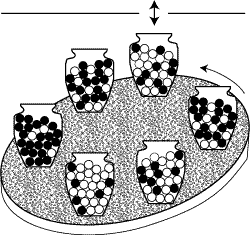|
|
Chapter 7: Statistical Models |
The search for rhythmic patterns can take many forms. Models of statistical periodicity do not presume that the signal itself is periodic; rather, they assume that there is a periodicity in the underlying statistical distributions. In some cases, the randomness is locked to a known periodic grid on which the statistics are defined. In other cases, the random fluctuations may be synchronized to a grid with unknown period. In still other cases, the underlying rate or period of the repetition may itself change over time. The statistical methods relate the signal (for example, a musical performance) to the probability distribution of useful parameters such as the period and phase of a repetitive phenomenon. These form the backbone of the beat tracking system that will be used throghout the remainder of Rhythm and Transforms.
| 7.1 Probability and Inference 7.2 Statistical Models of Periodic Phenomenon 7.3 Regularities in Binary Sequences 7.4 A Model for Symbolic Pulse Detection 7.5 A Model for Symbolic Pulse Tracking 7.6 A Model for Audio Feature Vectors |
 |